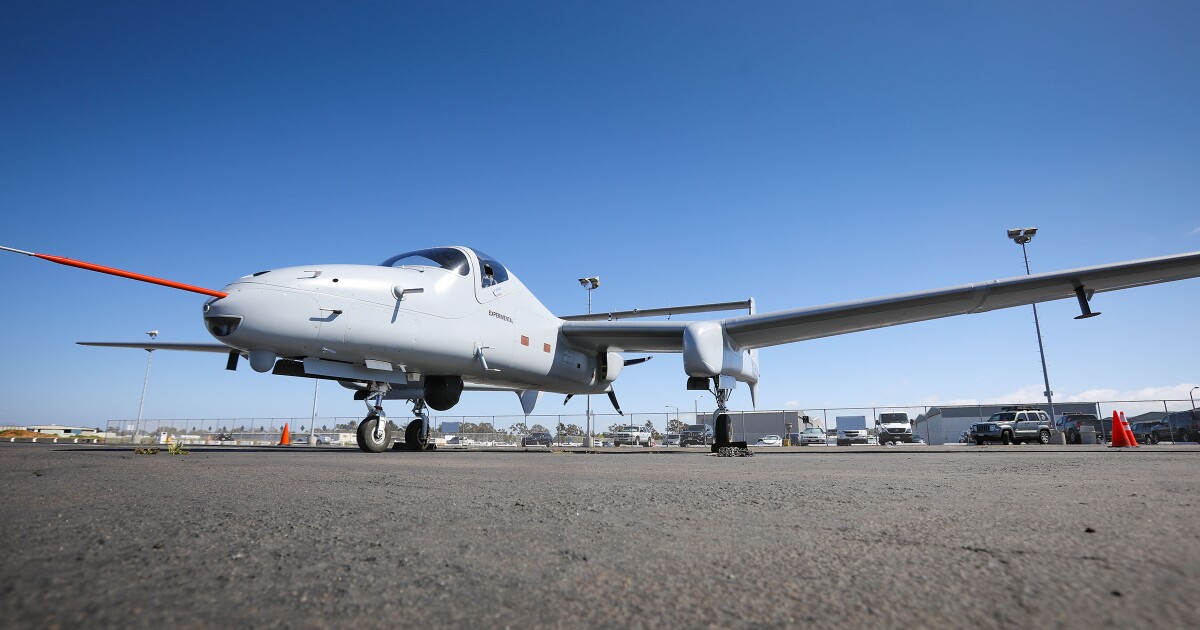Increasing pressure from Clairemont and Serra Mesa community leaders prompted San Diego officials to prioritize the addition of unleaded fuel tanks at Montgomery Field in Kearny Mesa and Brown Field in Otay Mesa airports.
Residents say that children are vulnerable to lead poisoning and negative cognitive impacts if they live or go to school under the flight paths of those two municipal airports.
For three years, residents have lobbied the city to reduce the number of planes that use leaded fuel at the two airports.
Lead has been illegal in auto fuel and paints since the 1970s because of its toxicity.
Lead is still allowed in small jet gasoline, but most of these planes can run on unleaded fuel if available. Residents want the city to make that option available to pilots as soon as possible.
In 2019, city officials were reluctant to get involved in what they described as a private business matter. But this week they reversed the situation and said unleaded fuel tanks will be installed as soon as possible at both airports.
“City staff are actively working with the Federal Aviation Administration, unleaded fuel suppliers, fuel tank vendors, airport companies, and airport users to identify the strongest and most effective way to do that. unleaded jet fuel is available at our municipal airports, ”said Penny Maus, director of the city’s Department of Real Estate and Airport Management.
Quentin Yates, one of the leaders of a group of residents known as the Montgomery-Gibbs Environmental Coalition, said Thursday that Maus’s announcement was good news.
“It cheers me up a lot — finally,” he said. “Our biggest problem has been raising awareness.”
Maus’ announcement came Wednesday during discussion of a possible 2022 ballot measure that residents have been pursuing to allow city voters to decide the issue.
The city council’s rules committee, which is considering possible ballot measures, said it would support such a measure if city personnel do not move quickly on adding the unleaded fuel tanks.
Councilor Raúl Campillo said it would be less risky and take less time for city officials to add the tanks without a ballot measure.
Councilor Stephen Whitburn said one reason for optimism is Mayor Todd Gloria and five new council members – including Whitburn and Campillo – who took office last December.
“I cannot speak to the actions or inaction of other administrations, but this administration and this council are working on this and I am confident,” he said.
Maus said the road might not be easy.
“This is a very complex issue involving many regulatory bodies, but we are committed to acting with due diligence and moving forward as quickly as possible,” he said.
Maus said he would recommend including $ 200,000 for lead-free tanks in the 2023 budget, which the council plans to approve next June.
Jorge Rubio, deputy director of the city’s real estate and airport agency, said he is in negotiations with a company that exploits part of Montgomery Field to allow the installation of a lead-free tank in an ideal open space.
The community leaders’ campaign does not target San Diego International Airport because jets, which have turbine engines, use a different type of fuel than small airplanes, which have piston engines. Jets use a combination
Airplanes with piston engines typically use leaded fuel, but it is estimated that 80 percent of them could run on unleaded fuel if the octane is high enough, according to authorities.
Yates said his group would agree to the city allowing planes that must use leaded fuel to continue to use leaded fuel.
He said the city’s change of mind is refreshing, but added that it has been frustrating to see about 3 tons of leaded fuel dumped into city neighborhoods in the past three years.
He added that it is unclear why people react aggressively when lead is found in water taps, but not when airplanes dump it over neighborhoods.
One reason could be that the amount of lead emissions at the two airports is well below what the federal government considers significant.
Pre-pandemic city documents say aircraft operations at Montgomery-Gibbs emit 1.4 metric tons of toxic lead each year, while operations at Brown Field emit more than half a metric ton each year. The federal standard for significant lead exposure is 25 metric tons.
Before 2020, there used to be about 200,000 flights a year at Montgomery Field and about 90,000 a year at Brown Field.
–


